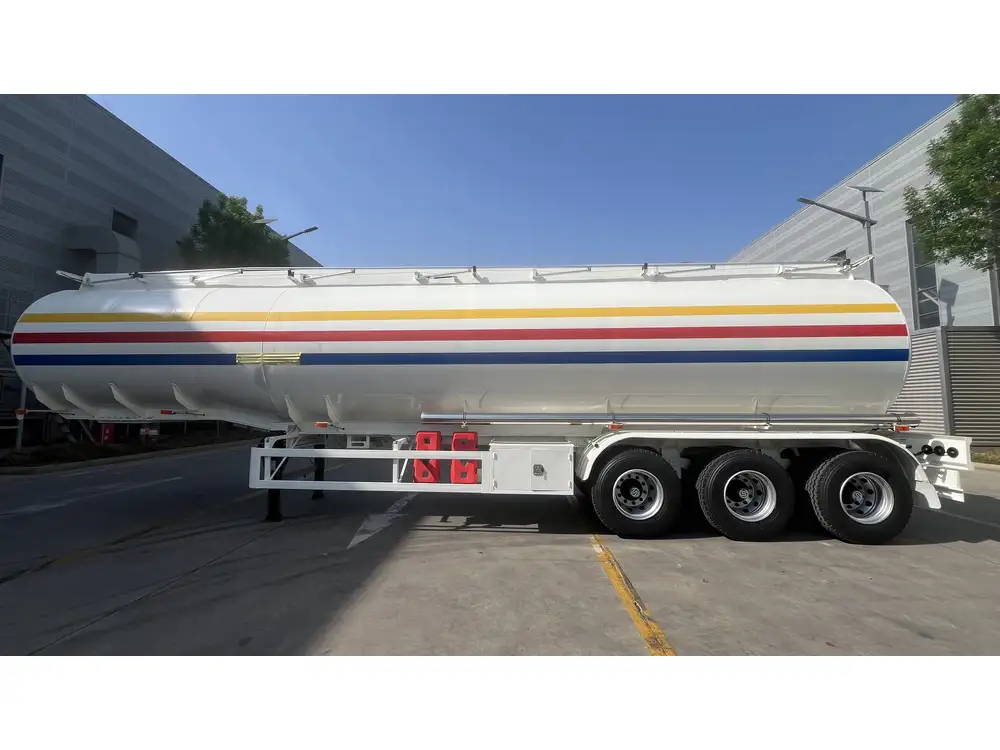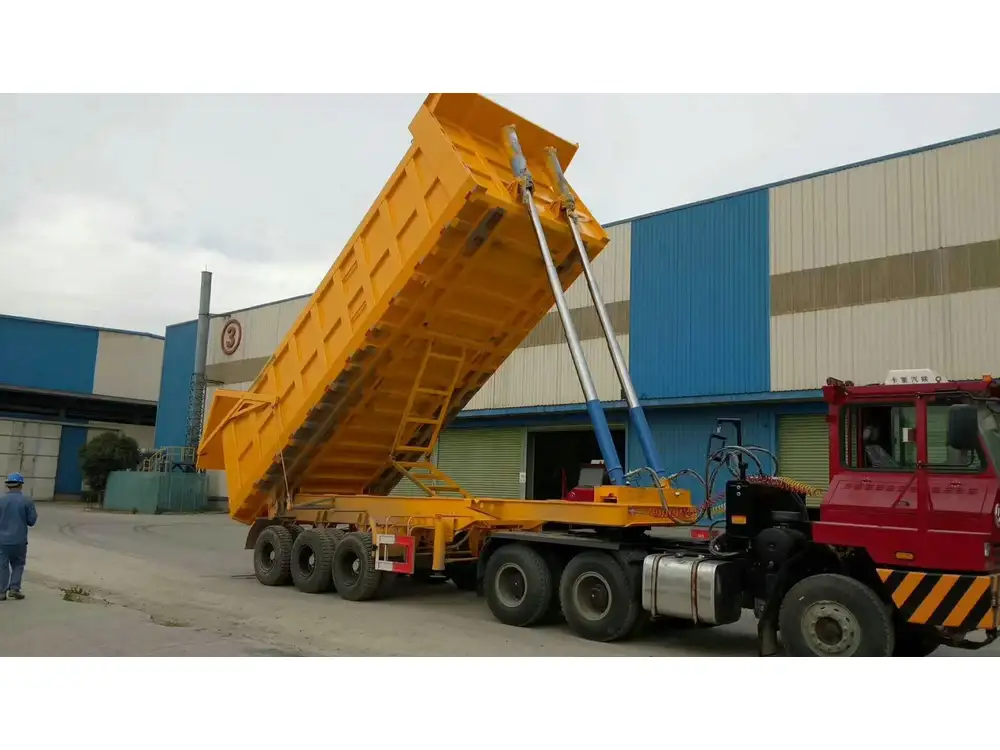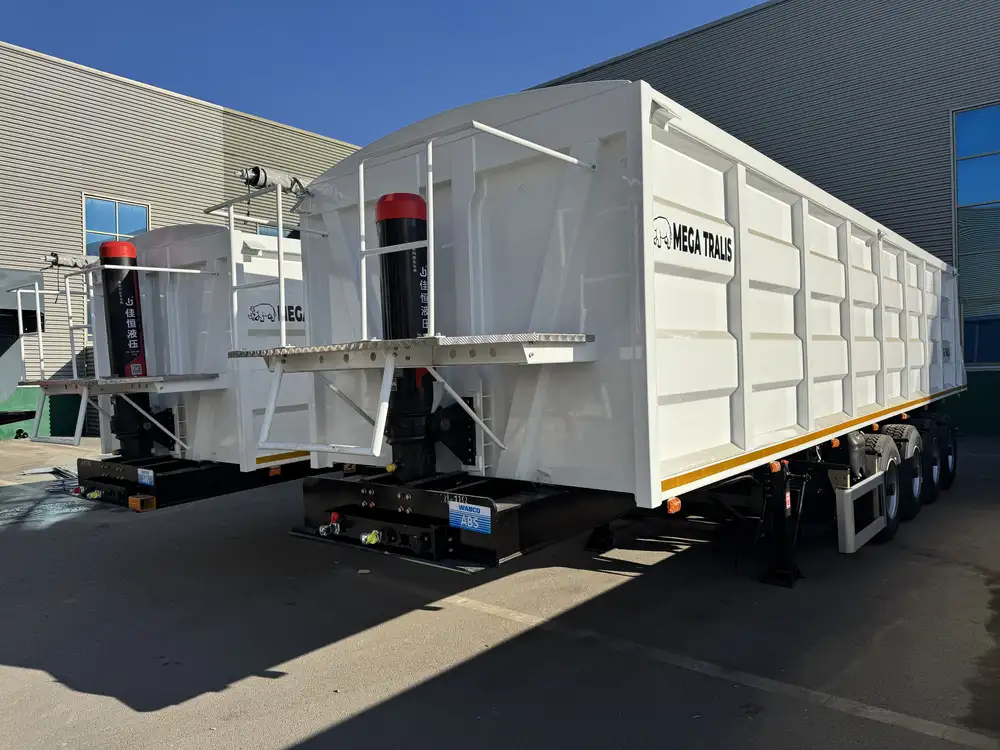Introduction to Semi-Trailer Capacities
When transporting goods, particularly bulk materials, understanding the capacity of a semi-trailer is essential for logistics management and cost efficiency. Semi-trailers, commonly used in trucking, come in various designs and sizes, directly impacting their volume capacity measured in cubic yards. This article dives into the intricacies of semi-trailer capacities, providing detailed insights into how many cubic yards a typical semi-trailer can hold, alongside practical information and considerations for optimal usage.
Basic Dimensions of a Semi-Trailer
Before delving into specific cubic yard calculations, let’s establish a foundation by examining the fundamental dimensions of a semi-trailer. Most semi-trailers are built with standard length, width, and height measurements, which can vary based on regulatory norms and specific applications:
- Length: The standard length for a semi-trailer is typically 53 feet (16.15 meters) for freight purposes, although some trailers can be shorter (48 feet or 14.63 meters) or longer (up to 57 feet or 17.37 meters) depending on state regulations.
- Width: Standard trailers are generally 8.5 feet (2.59 meters) wide.
- Height: The height on average reaches 13.5 feet (4.11 meters).

Semi-Trailer Volume Calculation Formula
To calculate the volume in cubic yards, we first calculate the volume in cubic feet using the formula:
[ \text{Volume (cubic feet)} = \text{Length (feet)} \times \text{Width (feet)} \times \text{Height (feet)} ]After obtaining the volume in cubic feet, conversion to cubic yards is performed since there are 27 cubic feet in one cubic yard:
[ \text{Volume (cubic yards)} = \frac{\text{Volume (cubic feet)}}{27} ]Example Calculation for a Standard Semi-Trailer
Using the standard dimensions mentioned previously, let’s compute the volume:
- Length: 53 feet
- Width: 8.5 feet
- Height: 13.5 feet
Step-by-Step Calculation:
Calculate the volume in cubic feet: [ \text{Volume} = 53 \times 8.5 \times 13.5 = 6,027.75 \text{ cubic feet} ]
Convert to cubic yards: [ \text{Volume} = \frac{6,027.75}{27} \approx 223.26 \text{ cubic yards} ]
Thus, a standard 53-foot semi-trailer can hold approximately 223 cubic yards of cargo.

Factors Affecting Semi-Trailer Capacity
When discussing how many cubic yards a semi-trailer can hold, various factors come into play that can affect practical load capacity, including:
1. Trailer Type
Different types of trailers are designed for specific tasks, such as:
- Dry Van Trailers: Enclosed and suitable for standard freight, often leading to higher capacity.
- Flatbed Trailers: Open and can carry larger or oversized loads but might have a lower cubic yardage due to irregular load shapes.
- Reefer Trailers: Refrigerated units ideal for perishable goods, with additional insulation impacting space.
2. Load Configuration
The manner in which goods are loaded into the trailer can also affect the effective volume used. Stacking, palletizing, and proper weight distribution can optimize space efficiency, ensuring maximum capacity utilization.

3. State Regulations and Weight Limits
Each state has regulations governing weight limits, which may restrict how much cargo can actually be loaded into a semi-trailer, regardless of the potential cubic yard capacity. These limits are designed to maintain road safety and structural integrity.
Common Applications of Semi-Trailer Capacities
Understanding the cubic yard capacity of semi-trailers is vital for various industries and purposes:
Construction Industry
In the construction sector, companies often utilize semi-trailers to transport bulk materials like gravel, sand, and concrete. By knowing the capacity, they can effectively determine how many loads are required for a specific project, enhancing efficiency and reducing costs.

Agricultural Transportation
Agricultural products, such as grains or livestock feed, also require careful consideration of volume capacity. Semi-trailers designed for agricultural transport may feature specialized configurations ensuring proper handling and airflow.
Retail and E-commerce
With the rise of e-commerce, retail distribution has increased reliance on semi-trailer transportation. Understanding the cubic yards needed for product categories allows logistics managers to optimize delivery schedules and improve overall supply chain management.
Calculating Load Capacity: Practical Scenarios
Here are some practical situations that demonstrate how to apply cubic yard calculations and considerations for semi-trailer capacity.

Scenario 1: Transporting Gravel
Assuming the total shipment consists of gravel needing a cubic yard measurement, a trucking company calculates delivery needs involving the standard semi-trailer, with approximately 223 cubic yards worth of gravel, necessitating an understanding of weight limits to ensure safety on the road.
Scenario 2: Moving Construction Materials
For a construction project requiring 445 cubic yards of concrete, the logistics team determines they need two trips using the semi-trailer, enabling more efficient scheduling and resource allocation.
Scenario 3: E-commerce Fulfillment
A retail business aims to ship packages totaling 300 cubic yards across multiple destinations within a week. By calculating the delivery logistics effectively, they can minimize costs and optimize fleet use, planning for two full trailer loads.

Useful Tips to Optimize Semi-Trailer Capacity
- Load Planning: Always develop a load plan before dispatch. Stock goods in a way that maximizes volume and distribution, ensuring no space is wasted.
- Weight Distribution: Balance the load across the trailer to comply with weight regulations and enhance safety during transportation.
- Use of Equipment: Employ suitable equipment such as forklifts or pallet jacks to facilitate efficient loading/unloading, reducing time and labor costs.
Recommended Capacity Charts for Specific Semi-Trailer Types
| Trailer Type | Approx. Capacity (Cubic Yards) |
|---|---|
| Standard Dry Van | 223 |
| Flatbed | Varies (depends on load type) |
| Reefer | 234 (average with insulation effects) |
Conclusion
Grasping the details about semi-trailer capacities, particularly in cubic yards, equips logistics professionals and transportation managers with the insight needed for successful load planning and operational efficiency. By understanding standard dimensions and how variations affect capacity, users can make informed decisions, optimize deliveries, and enhance overall business performance.
Incorporating a systematic approach with clear calculations, essential considerations, and practical applications ensures that optimal use and awareness of a semi-trailer’s capacity aid not only in fulfilling delivery mandates but also in elevating logistical excellence.
By diving deep into the specifics of semi-trailer capacities, this article aims to not only inform but also engage readers needing precise insights on how many cubic yards a semi-trailer can hold. Utilizing the information provided, users can approach logistics with confidence, backed by a wealth of relevant data.



